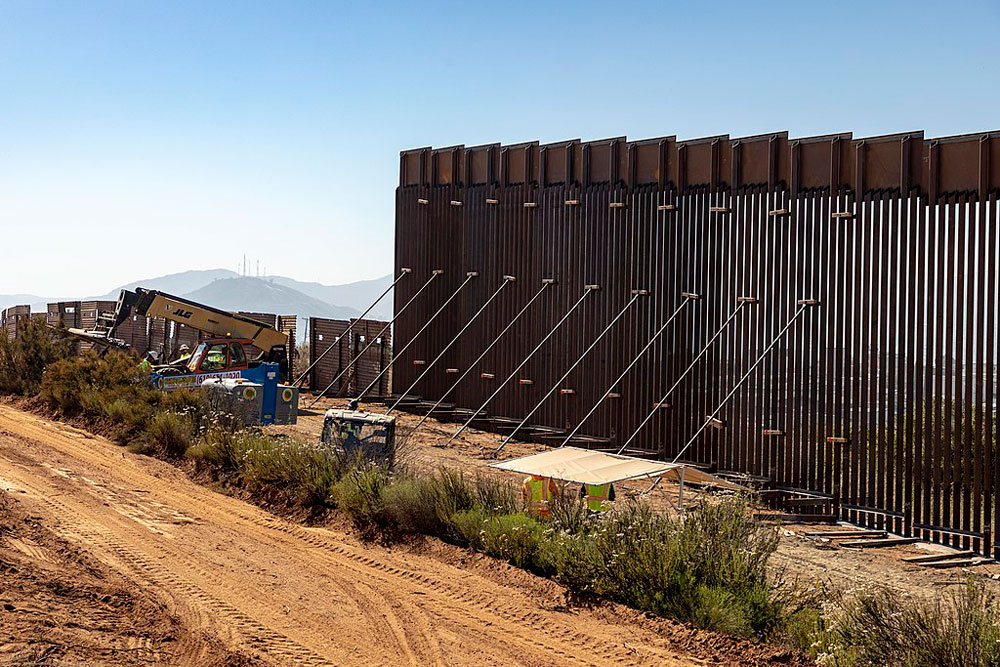
January 31, 2020; Center for Biological Diversity, On Spec, and The Nation
On the last day of January, four conservation groups petitioned the Supreme Court to review lower court decisions that have “allowed the administration to waive dozens of environmental, health and safety laws to speed construction of border walls from the Pacific Ocean to the Rio Grande Valley.”
The Supreme Court petition, filed by the Center for Biological Diversity along with Defenders of Wildlife, the Animal Legal Defense Fund, and the Southwest Environmental Center, claims that decisions by the US Department of Homeland Security to waive more than 40 environmental protection laws—including the National Environmental Policy Act, the Endangered Species Act, and the National Historic Preservation Act—are unconstitutional. These decisions are based on “expired Congressional authority,” say the petitioners.
Congress gave the Secretary of Homeland Security the sole power to waive all laws “necessary to ensure expeditious construction of the barriers and roads” to protect the border in the Real ID Act, which was signed into law in 2005. The law also restricted court review of waiver decisions. Claims may only be brought “alleging a violation of the Constitution of the United States.” That is a high bar.
Thus far, the various lawsuits challenging the border wall have failed to stop it. Now the impact is becoming evident. A steel wall is rising from the desert, bifurcating fragile desert ecosystems that one might have thought would have some claim to protection as national wildlife refuges. Yet without any environmental review, the wall proceeds, running through the San Bernardino National Wildlife Refuge, the Cabeza Prieta National Wildlife Refuge, Organ Pipe Cactus National Monument, the Lower Rio Grande National Wildlife Refuge, and the Santa Ana National Wildlife Refuge.
Laiken Jordahl, who is a borderlands campaigner with the Center for Biological Diversity, one of the organizations petitioning the Court, previously worked for the National Park Service at Organ Pipe Cactus National Monument. He has made it his personal mission to keep the public informed about what is happening in this far-off corner of the United States.
Sign up for our free newsletters
Subscribe to NPQ's newsletters to have our top stories delivered directly to your inbox.
By signing up, you agree to our privacy policy and terms of use, and to receive messages from NPQ and our partners.
“The wall is destroying the fragile ecosystem park service scientists have dedicated their lives to protect,” he writes on Medium. “It will stop migrating wildlife in their tracks, preventing animals like desert bighorn sheep, Sonoran pronghorn and even cactus ferruginous pygmy owns—which rarely fly higher than 12 feet—from finding water, food and mates.”
The administration’s complete lack of compassion for all life forms—people, animals, plants—is made spectacularly clear if you consider the elemental need of all life for water. In this environment water is scarce. Yet both at Organ Pipe Cactus National Monument and at the San Bernardino National Wildlife Refuge, construction crews are draining oases and most likely aquifers to mix concrete.
At San Bernardino, writes William DeBuys in the Nation, “Contractors building the wall have drilled three wells along the border and leased a fourth. Tanker trucks constantly shuttle between the wells and the concrete plant. Nobody is saying how much water wall construction will consume.”
At Organ Pipe, the wall will run just south of Quitobaquito Springs, the only “reliable surface water within 50 miles.” Says Jordahl, “Thirsty wildlife south of the wall will soon find themselves close enough to smell the sweet relief of water, but unable to get there. Animals will die of thirst in plain sight of salvation through the rusted steel slats of Trump’s wall.” As climate change intensifies, and animals seek to move north for cooler weather, they will be stopped in their tracks by 30-foot steel walls.
So will the people, who will find an already harsh environment even more deadly as they try to find a way around legal border crossings that have become blockades. As the petitioners to the Supreme Court wrote in their press release, “Beyond jeopardizing wildlife, endangered species, and public lands, the US-Mexico border wall is part of a larger strategy of ongoing border militarization that damages human rights, civil liberties, native lands, local businesses and international relations.”
We all own our public lands: if the Supreme Court rules that the Constitution doesn’t protect them, Congress needs to revisit their blunder in handing wholesale authority to any administration official to subvert environmental laws in the name of false “security.”—Karen Kahn













